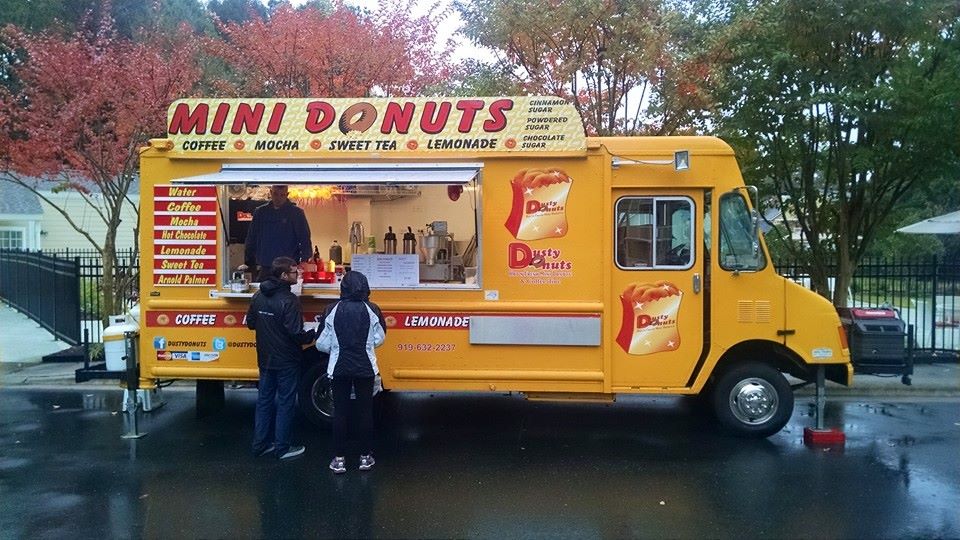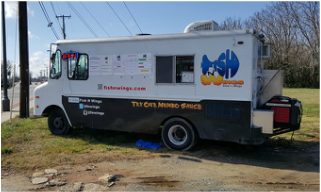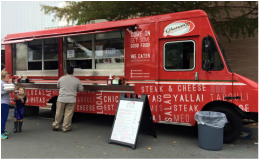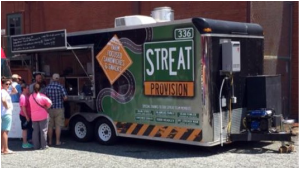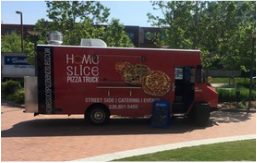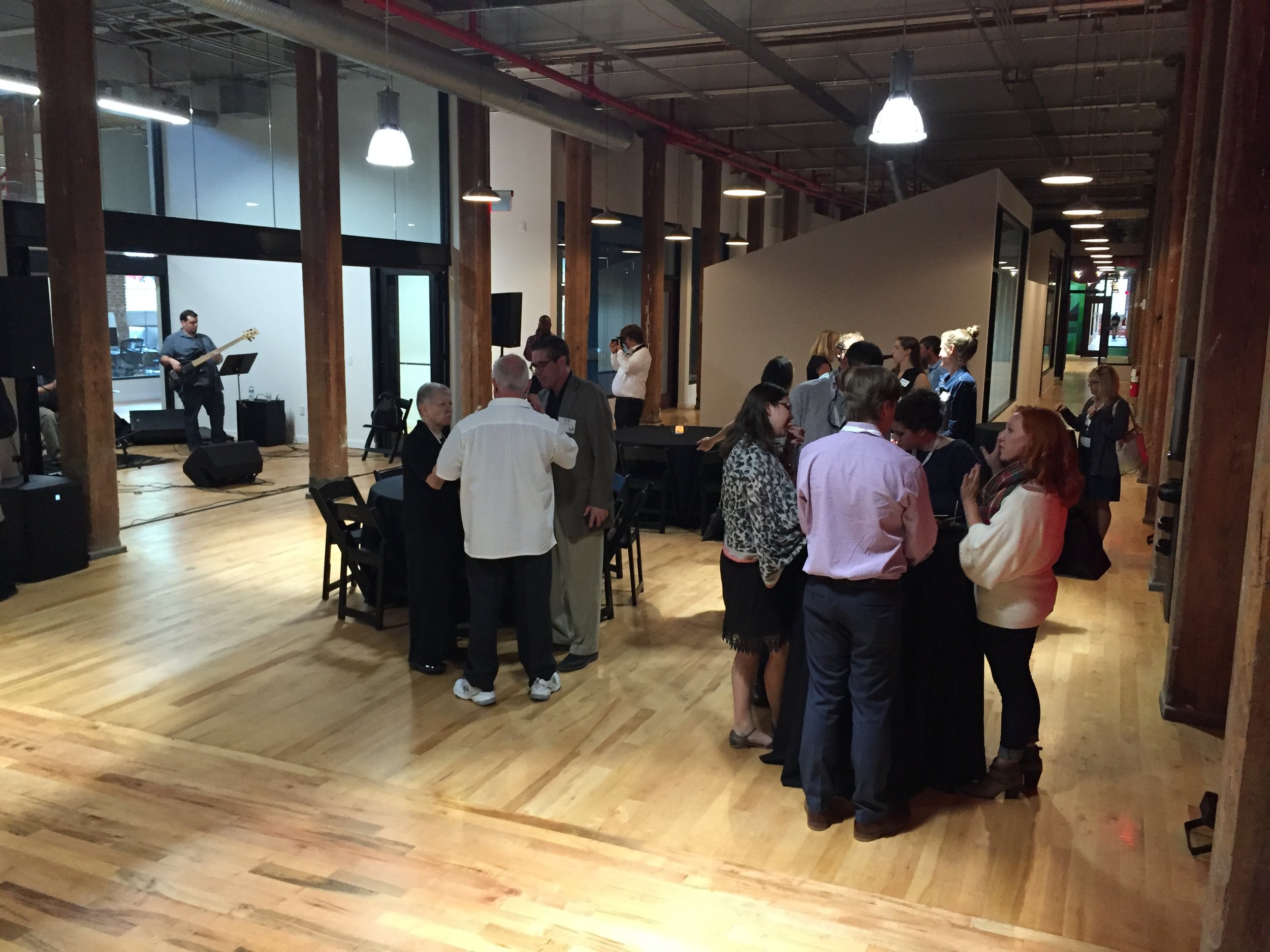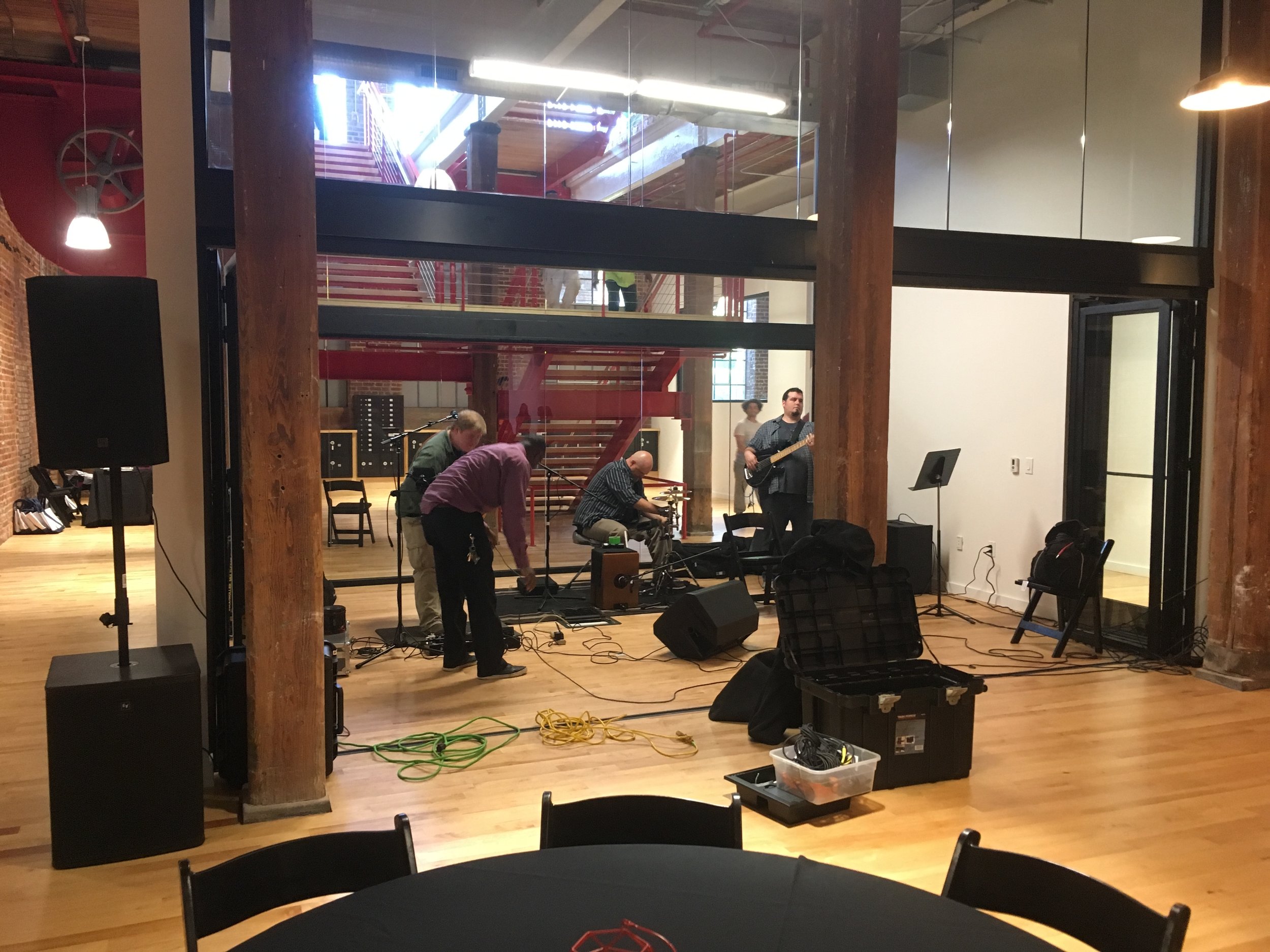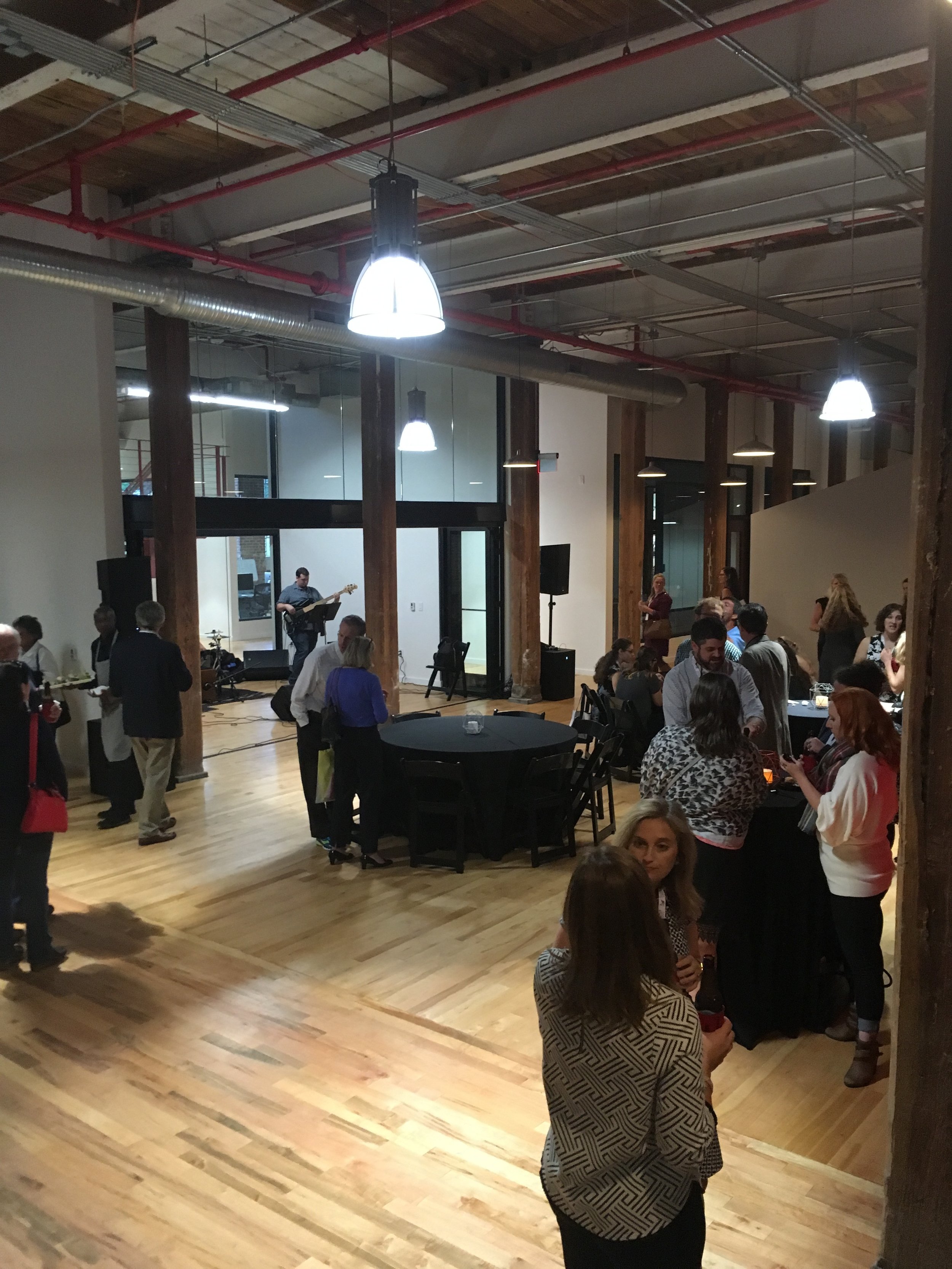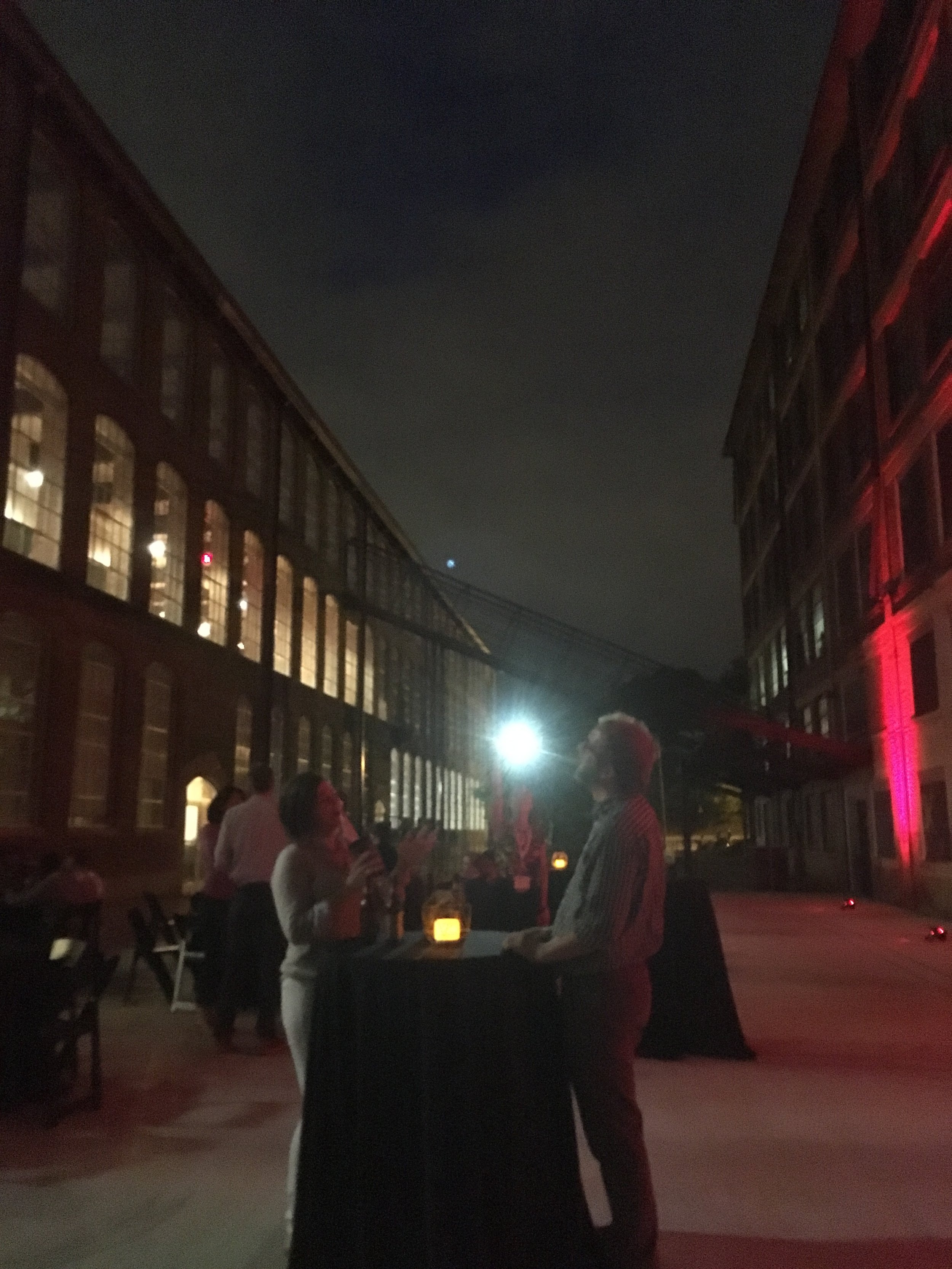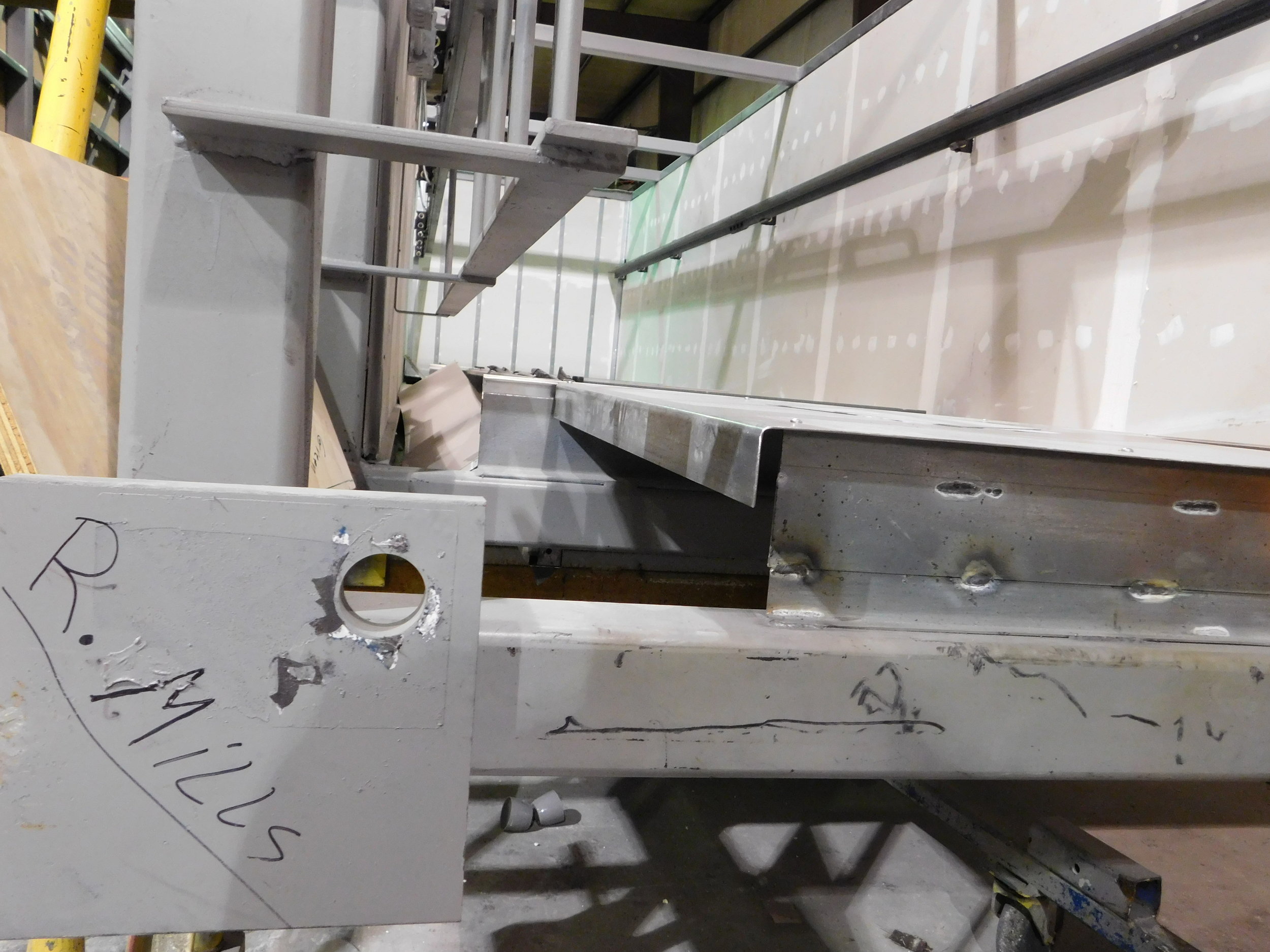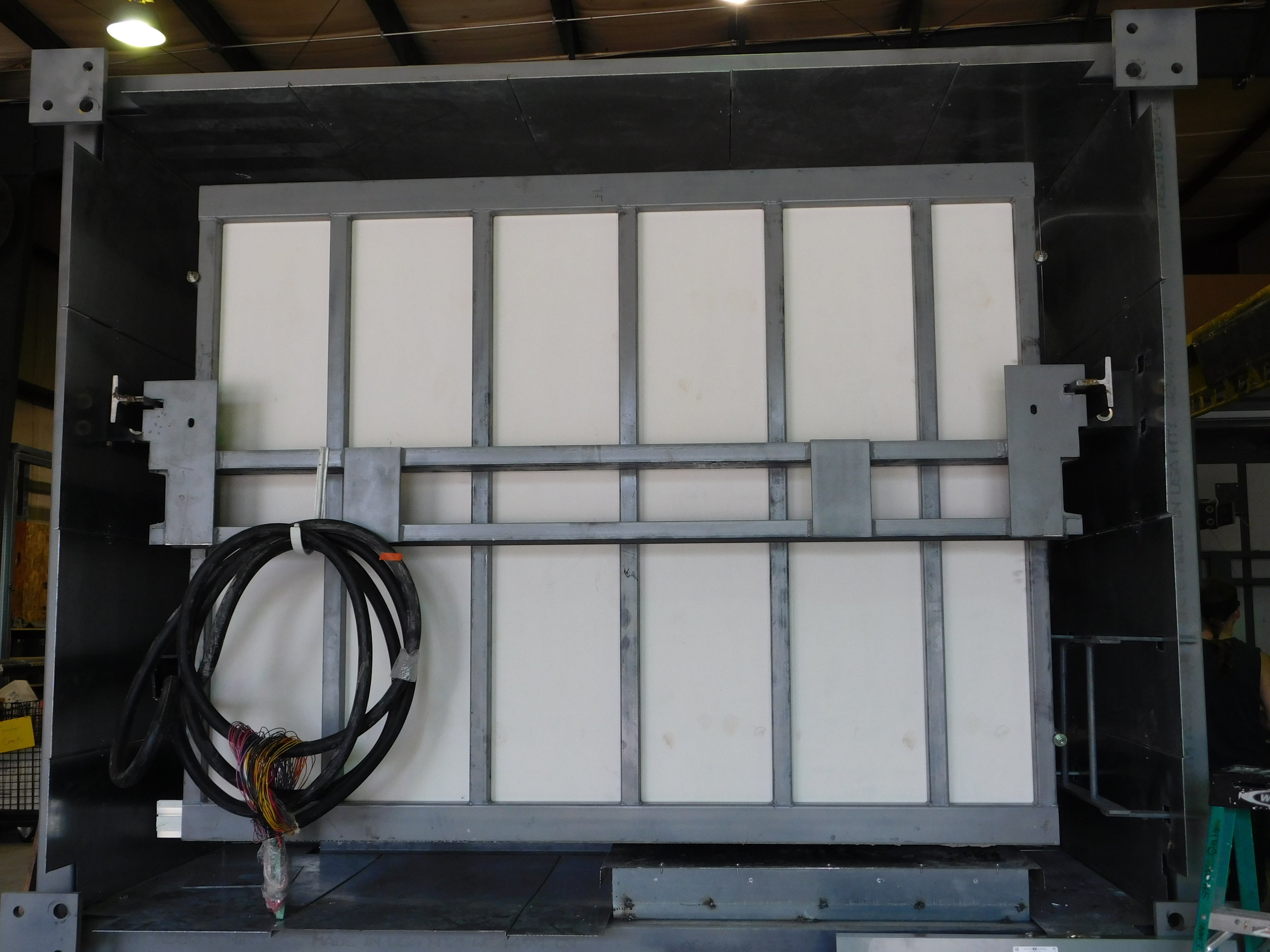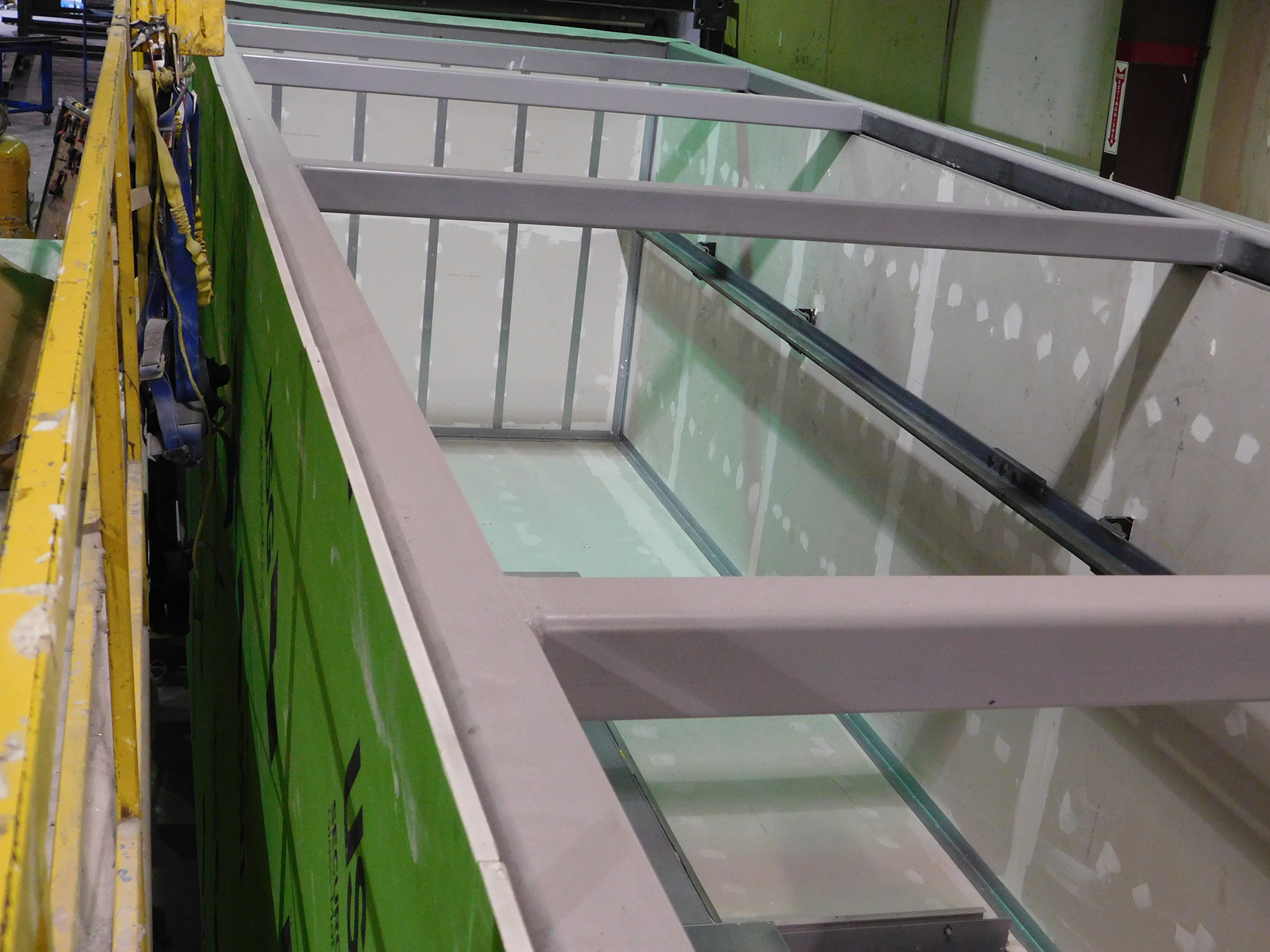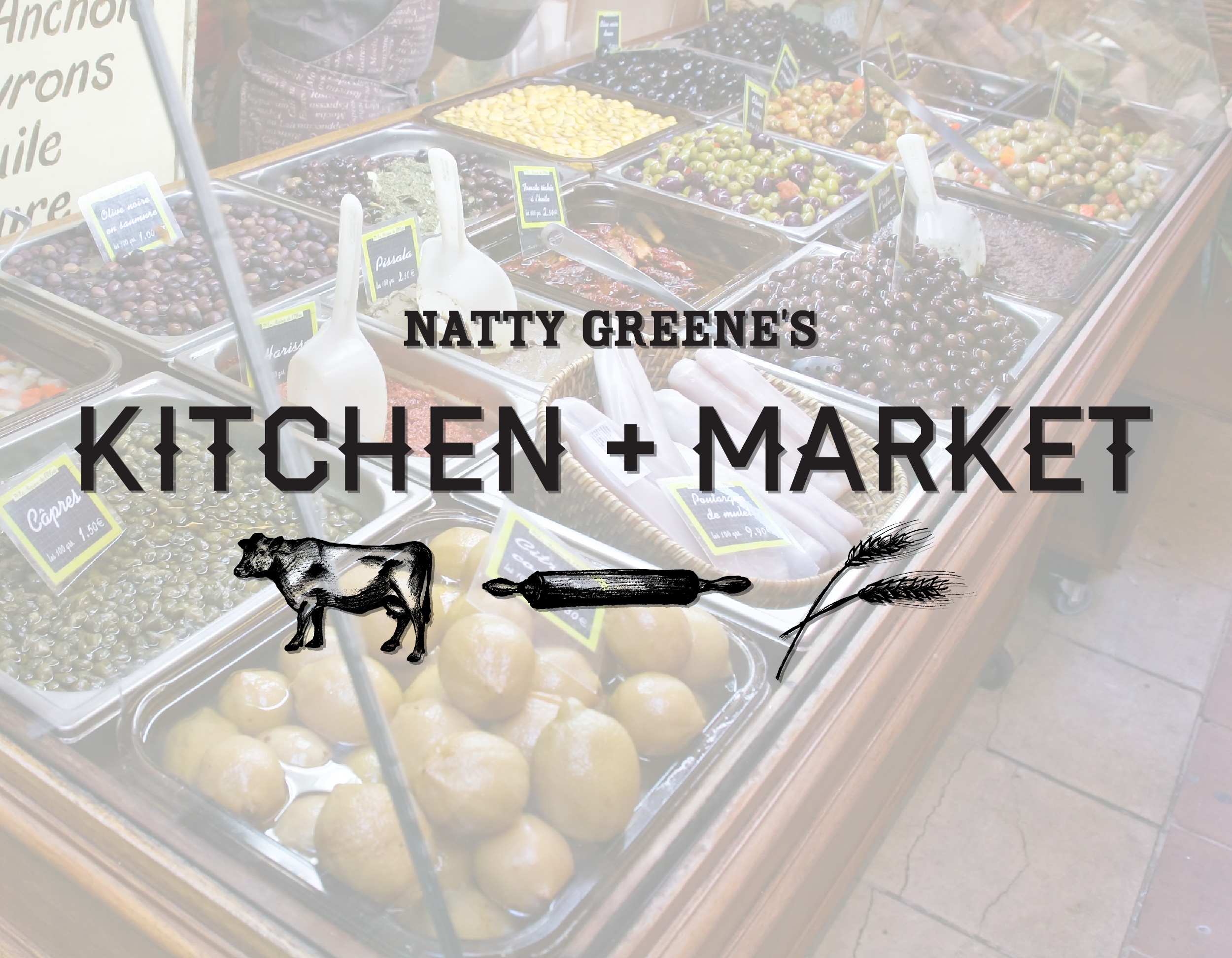Even up close, many Felix Semper sculptures appear to be carved from stone.
The finely detailed, expressive features of the bust’s head and shoulders. The light gray or off-white finish.
Then Semper slowly pulls the head upward, stretching, twisting and contorting its features into something resembling a sci-fi creature.
He reveals its construction from thousands of compressed sheets of white paper, glued, intricately carved and painted. It unfolds like an accordion or a Slinky, then retracts as Semper slowly returns it to its original shape.
“It’s definitely a conversation piece,” he said.
His kinetic sculptures spark conversation in his gallery at Revolution Mill, in a New York exhibition, in online videos and on the streets of New York and Miami, where he frequently displays his art.
His subjects include the late rapper Notorious B.I.G., artists Andy Warhol and Jean-Michel Basquiat, the mythological Daphne, author Ernest Hemingway and Cuban martyr José Martí, a popular figure in Semper’s homeland.
This month, he took his Notorious B.I.G. — aka “Biggie” — sculpture to the legendary Avalon Hotel in Miami’s South Beach, then captured the scene on video.
Awed passers-by pull out their cellphones to record Semper demonstrating its maneuvers.
“That’s brilliant!” one spectator says.
Semper’s artistic talent extends beyond sculpture, to large and colorful acrylic paintings that combine traditional and graffiti street art styles.
His sculptural materials have expanded, too, to wood, books, found objects and even vinyl records.
“Biggie” and “Pink Hemingway” combine wood and paper.
He made Biggie’s gold-painted crown from wood, to protect the sculpture’s paper portion from curious hands.
He carved the head of “Pink Hemingway” from stacked sheets of plywood, then topped it with a paper sculpture of a can spilling pink paint. He covered the base with tree bark.
An interior mechanical device holds the wood layers together, while allowing the author’s face to be twisted into new looks.
“Most of my work has inspiration from the past but has a very modern twist,” Semper said.
Late reggae musician Bob Marley will be his next subject.
“I want to go to the next edge and find the new thing,” Semper said.
Mara Semper, his wife of 10 years, saw how art pulled her husband out of the doldrums after his home-building business ended in 2009 with personal bankruptcy.
“When he takes a sculpture into the streets of New York and Miami, he is sharing that joy with other people and it brings so much joy to his life,” she said.
***
Scenes in Semper’s paintings draw artistic inspiration from his native Cuba and his younger years in Spain.
He still visits Cuba and the artists’ colony in the village of Deia, on the Spanish island of Majorca.
“It’s the most inspiring place for me,” he said.
Born in Havana 52 years ago, he moved to northern Spain at age 9 with his parents and sister, Madelin.
“I loved Spain, the culture,” he recalled “I was really exposed to a lot of beautiful things.”
From Spain, his family moved to Miami, where his father worked in the construction business.
His mother supported his artistic interests, arranging for art classes and books.
“But I guess I needed something more to pay the bills, so I decided to work with my dad,” Semper said.
When his sister moved to Greensboro in 1999, Semper, his first wife and their two sons soon followed.
Semper became a homebuilder in 2003 as the industry thrived.
“It was a hot time to be a builder,” Semper said.
Until 2008, that is, when recession hit.
Semper was left with several expensive spec homes unsold.
When banks didn’t want to continue financing them, Semper said, he declared personal bankruptcy in 2009.
“It was a really tough time for me,” he said..
Homebound in a snowstorm one day, he went outside and spent hours making a snow sculpture.
It depicted a bearded man resembling the god Neptune, his arm around a long-haired woman.
“I had never made a sculpture in my life,” Semper said.
When Mara Semper saw it, she said, “You need to take some sculpture classes. This is so good.”
He began to draw. In one day, he nearly filled the house with drawings.
At his wife’s urging, Semper took classes in clay sculpting.
And he started to paint. A New York gallery exhibited several of his paintings in a group exhibition.
“I started looking at the art world, saying, ‘At my age, if I am going to take this seriously, I have to do something totally different,’” Semper said.
He remembered working with paper as a paste-up artist in a Miami print shop. He thought of the stacks of paper, and how they moved a bit when cut.
“All of a sudden, the sculpture and the paper came together in my mind,” he said.
***
The Sempers’ Lake Jeanette home, its backyard brickwork and Felix’s tile-roofed workshop display his artistry.
Here, he creates art for his Revolution Mill gallery. Mara Semper creates a different type of artistry, at Park Place Salon, the hair-styling business they own.
***
Semper started his first paper sculpture, “Red Head,” about three years ago.
He glued a stack of paper together to resemble a block of wood, then carved it.
At its top, he began to experiment.
He recalled his work as a builder with hollow core doors, and how a fiberboard honeycomb structure inside the door provides strength.
So he glued the top stack of paper in a way that he could expand and retract it.
Semper had carved out his own sculptural niche.
He uses bond paper varying in weight from 20 to 60 pounds.
At first, he used a knife and sandpaper to shape the faces. It was so difficult, he almost gave up.
He developed a special saw and blade. He created a template to glue the paper by hand.
Now a company does the gluing. Lines of glue are spaced 1.5 inches apart on each sheet to create the desired pattern.
“I take that block of paper, and I give it a life,” Semper said.
It’s a lot of paper — more than 7,000 sheets in “Biggie” alone. His Basquiat sculpture weighs about 70 pounds.
He has created smaller paper sculptures, such as lifelike slices of pizza and a “Semper Biggie Burger.” Buyers get them wrapped and packaged in a cheeseburger bag.
His Andy Warhol sculpture holds a box of Cheez-Its crackers.
“These have zero calories and no nutritional value at all,” Semper joked. “They’re very high in fiber, though.”
He has found only one other artist that creates work similar to his — Chinese artist Li Hongbo.
Semper now also turns books into sculpture.
He bought books about Marilyn Monroe, glued them at the covers, then carved her face into them and painted it. A plexiglass cover keeps them together.
He did the same with books about his artistic inspiration, Picasso.
Semper wanted to sculpt another admired artist, the late musician Jimi Hendrix — not in paper, but vinyl.
He collected 100 Hendrix vinyl records, then stacked, blow-torched and shaped his face into them.
It was tedious, smelly work. He wore a mask to guard against fumes.
“Vinyl records, if you do anything to them, they tend to crack and shatter like a glass,” Semper said. “I could never do it again as a spec, because it’s extremely hard.”
He carves a wooden sculpture of Bob Marley, with lots of twists.
Pieces of wood in the sculpture will be hinged, opening as much as 20 feet. Each piece of wood will depict writings, poems and paintings.
He is designing a motorized system to open the sculpture to display its interior art.
So far, Semper’s paintings have sold better than his sculpture.
He has sold more than 100 paintings, most in the $1,200 range. They can be viewed in his gallery and at Mark’s Restaurant on Dolley Madison Road.
In comparison, he has sold four sculptures, two of them cheeseburgers.
Yet sculptures take Semper three or four months to create.
He prices them at $20,000 to $40,000, smaller pieces at $5,000 to $10,000.
Book sculptures run in the $5,000 range.
Or you can buy a burger for $800.
To promote his work, he licenses videos on his sculpture to a media distribution company and other sources. The company makes them available to TV stations and other news outlets worldwide. He hopes that will lead to more contracts and sales.
Yes, he is a businessman, Semper said. But it’s not all about money.
“Art is about giving the world what I have, which is my art,” he said.










